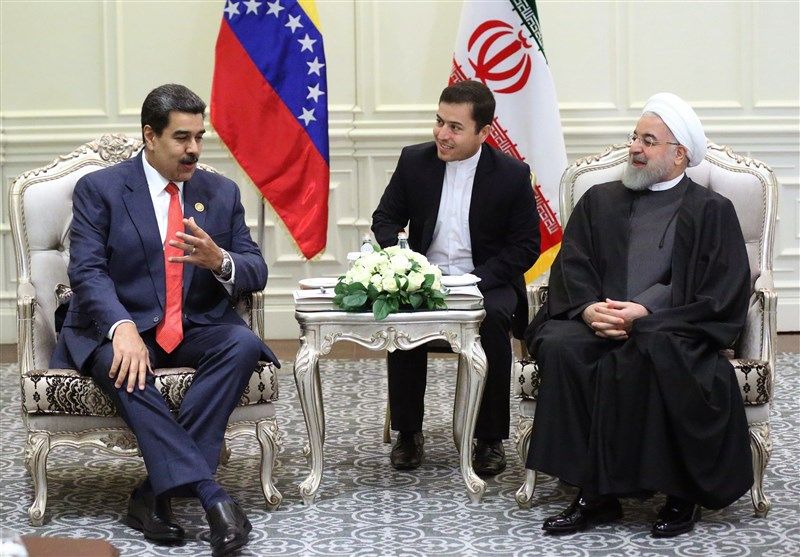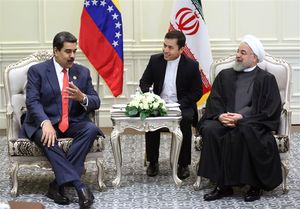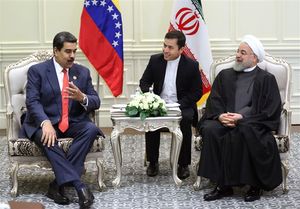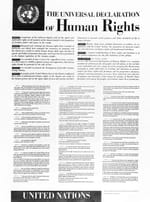[Versión en español] [Version en français] [Deutsche Fassung] [Versió en català]
Abstract
Last June 2022, the Venezuelan government granted 2.5 million acres of land to the Islamic Republic of Iran for agricultural use under a 20-year cooperation agreement. Venezuela and Iran have aligned as a unified bloc against the West and the United States since 1999, deepening their bilateral cooperation in numerous areas. Iran has reportedly resorted to tactics used in the broader Middle East, such as funding terrorist and proxy criminal organizations like Hezbollah, to strengthen its position in the Western hemisphere. The Venezuelan regime, first under Hugo Chavez and since 2013, under Nicolas Maduro, has turned the country into an outpost for Iranian illicit activity, with the help of Hezbollah networks that have influence in the government. The following paper aims to shed light on the depth to which Venezuela's strategic alignment with Iran along with the convergence with Hezbollah networks in the Americas poses a hybrid threat to international security.
Keywords: Venezuela, Iran, Hezbollah, hybrid threat, convergence
Introduction
During last July 2022, the Venezuelan regime headed by Nicolás Maduro granted the Islamic Republic of Iran a large number of acres of land within Venezuelan territory under a strategic cooperation agreement between Caracas and Tehran that is estimated to last 20 years. This agreement involves various sectors such as tourism - resumption of Caracas-Tehran commercial flights - scientific collaboration and other areas under development (NTN24 2022).
Allegedly, the land - which spans 2.5 million acres - will be used for crops such as corn and beans, while Iran commits in assisting Caracas rebuild its smallest oil refinery, "El Palito" (Middle East Institute 2022). According to the Washington DC-based think tank Gates Institute (2022), ties between Iran and Venezuela reached their zenith during the tenures of Hugo Chavez and Mahmoud Ahmadinejad as presidents of their respective governments during the 1999-2013 period, when both leaders signed a large number of bilateral agreements cementing the strategic alignment against the United States and its allies. The relationship between these countries is rarely approached through the prism of international security, especially in European policy circles.
The ties between Caracas and Tehran - two seemingly culturally and geographically distant partners - have diversified from strict trade in the hydrocarbon and energy sector, which has been frequently challenged by the US and its allies, such as the 2008 seizure by Turkey of an Iranian oil tanker, carrying 22 containers full of explosive materials bound for Venezuela, to the most recent detention in 2020 by the U.S. of four oil tankers in the Strait of Hormuz also bound to the port of La Guaira (Gates Institute, 2022).
Beyond the aforementioned events, a phenomenon that is increasingly coming to light is the suspected facilitation by the "Chavista" regime of the Iranian Islamic Revolutionary Guard Corps - IRGC or Al Quds - to operate and gather intelligence with the help of Iran's own proxy in the region: the Lebanese militant group Hezbollah (Op. Cit.). In March 2020, the U. S. Department of Justice filed several indictments against Caracas accusing the regime of narcoterrorism activities, specifically targeting Syrian-Venezuelan national and Venezuelan National Assembly member Adel el Zabayar for colluding with the Revolutionary Armed Forces of Colombia - FARC -, the IRGC, Mexican drug cartels, and Hezbollah (Atlantic Council 2022).
Over more than two decades, the deterioration of the Venezuelan political system has taken place in full view of the West, including Latin American democracies, the European Union and the United States. However, the response of these stakeholders has taken little account of the vast network of organized crime that bridges organizations traditionally operating in the broader Middle East, such as the Iranian proxy Hezbollah, and government officials in the Americas, and the effect this collusion can have on international security if not adequately addressed.
The National Defense University - based in Washington D.C - since 2013 has been thoroughly assessing the convergence of organized crime and terrorism - activities that are framed as "narcoterrorism" by the U.S. Justice Department's indictment of Caracas officials - which offers its position on the matter aided by the judgment of former NATO Supreme Allied Commander Europe, retired United States Navy admiral James G. Stadaviri, who explains the convergence as follows:
"[Transnational] organizations are a large part of hybrid threat that forms the nexus of illicit drug trafficking – including routes, profits and corruptive influences – and terrorism, both homegrown as well as imported Islamic terrorism which has become globalized in its outreach and collaboration via networks as well as horizontal diversification” (Atlantic Council 2020, p.5)”.
Therefore, the threat posed by Iranian proxies such as Hezbollah operating throughout Latin America, as well as the IRGC itself, is framed by the Atlantic Council (2020) as a hybrid threat. The term was originally developed by United States Marine Corps four-star retired general Charles C. Krulak and a number of United States Marine Corps analysts which began to identify trends since the events in Chechnya in which the methods of warfare were being deliberately bended and blurred, however the theory of hybrid warfare took form out of the assessment of Hezbollah’s actions in Southern Lebanon (Hoffman 2016, p.28).
One key element that Hoffman (2016) points out in the concept of hybrid warfare and threats, is the disruptive social behavior of organized crime and the deployment of nonmilitary tools such as finance. A second aspect to consider in the concept of hybrid warfare and threats is that all actions fall under the threshold of traditional war.
Therefore, transnational organized crime (TOC) can also be used and instrumentalized by state actors as a proxy to counter influences of competing geopolitical rivals in specific regions. Jefferson Guarín (2020) advices that the minimization of groups such Hezbollah as a simple terrorist group fails to properly assess the threat they posed to international security and monitoring of its activities, and minimizes – in the case of Hezbollah and its relationship with Iran as its main facilitator – to the single territorial scale of the broader Middle East. The following essay aims at delivering an overview of the evolution of Iranian-Venezuelan relations during the last two decades and the role Hezbollah as played as a “middle man” in the relationship and the threat this strategic triangulation poses to international security in the current geopolitical context.
The reason behind the drafting of this short essay is to fill the knowledge gap in foreign policy circles – more precisely in Europe - on how a rogue states such as Iran is able to counterbalance the influence of westerns powers – specially the United States – beyond the Eurasian continental mass and in the traditional western area of influence which is Latin America. The first part of the essay will go through the historical background of Venezuelan ties with the broader Middle East focusing on its alignment with Iran on key elements. Second, an overview of Hezbollah's activities in Venezuela, its links with Venezuelan officials and the role it plays as Iran's proxy in the country. Finally, a conclusion will be offered on how to interpreted the recent agreement and cooperation strategy.
Venezuelan Ties with the Broader Middle East and Iran
Even though and effort should be made to understand the relationship between Venezuela and the Broader Middle East beyond the geoeconomic logic provided by the oil industry’s role in knitting and influencing the relationship which is common knowledge, it cannot be dismissed. Sorio (2016) sets forth two trends to be analyzed to properly understand the evolution of the importance of Venezuela-Middle Eastern relations. First, the growing assertiveness and relevance of Venezuela as an international actor eager to counterbalance the United States through alternative regional integration schemes along with strategic alliances with competing powers such as Russia and China. Second, closer relations to the broader Middle East came about through the increase of the links of the region with key anchor states in the Americas such as Brazil by means of the South American-Arab Countries Summits (better known by its Portuguese and Spanish acronym "ASPA") (Sorio 2016, p.100).
It can be argued that Caracas acted through multilateral forums such as ASPA, or even through the efforts of Arab diaspora organizations in Venezuela such as FEARAB, which coordinates 45 Arab-Venezuelan organizations. Instead, the country managed to exert its own weight to portray strategic autonomy in shaping its ties with the region through what Blanco Osorio (2016) calls the "Energy Variable." This would be achieved by becoming one of the founding members along with Iran, Saudi Arabia, Kuwait and Iraq of the Organization of Petroleum Exporting Countries in 1962 (OPEC).
In recent years, the Venezuela-Iran alignment in OPEC has been mainly due to the fact that both countries have shared low productivity rates, thus both advocate for high export prices, which counteracts the position set by pro-US producers such as Saudi Arabia (Pereira Stallaert 2018, p.181). It should be noted that during the early years of OPEC - arguably the forum responsible for bridging the gap between Venezuela and Arab oil-exporting countries and Iran - both countries were led by pro-US administrations. Romulo Betancourt in the case of Venezuela, and Shah Mohammad Reza Pahlavi in the case of Iran, who gained the favor of the Western powers after the MI6 and CIA-led coup against Prime Minister Mohammad Mossadegh - leader of the National Front - during 1951 after he decided to nationalize the Anglo-Iranian Oil Company, which later became BP, with the support of Iran's Tudeh Party (lit. 'Masses Party of Iran'), an Iranian communist party formed in 1941 (Pereira Stallaert 2018,p.181 ).
The placement of the Shah's son by the Western powers as ruler of Iran in place of the popular Mohammad Mossadegh - a move that followed the strategic logic of containing Soviet influence in the context of the Cold War - who presided over an authoritarian regime favorable to Western interests, influenced and laid the groundwork for the 1979 Islamic Revolution led by Ayatollah Khomeini. Despite Khomeini's anti-American rhetoric, the United States remained the country's most important economic partner, until the 1987 Iran hostage crisis, when Islamist students stormed the U.S. embassy in Tehran and kidnapped over 66 American diplomats for 444 days, which in turn led Washington to freeze US$12 billion and Tehran to release the hostages and lose its main economic partner (Pereira Stallaert 2018, p.181). This outcome forced Tehran to seek alternative allies and partners around the world, turning to Turkey, China and South Korea and, in the case of Latin America, Brazil and Argentina.
In its immediate neighborhood, the Islamic Republic was involved in a bloody war with Iraq from 1980 to 1988 that resulted in the death of one million Iranians, leading Tehran to initiate the well-known recourse of setting up proxies and training armed militias in the region to exert its influence and advance its strategic objectives. Two main proxies and theaters should be mentioned. First, Hamas and the Palestinian Islamic Jihad in the Palestinian territories, and Hezbollah in Lebanon. In the case of the first one, despite the fact that Hamas is a Sunni organization, while Hezbollah is Shiite, the Ayatollah pledged in 1992 US$ 30 million -annually- to the Gaza-based organization; however, in the words of Sean Goforth (2008), Hamas is nothing more than a "vestige" of Iranian foreign policy in the Middle East. The case of Hezbollah in Lebanon is evidence of the successful export of the Islamic Republic's own model of militant Islamist organizations, albeit adapted to Lebanon's own challenges on the ground.
In the aftermath of the Lebanese civil war, Iran deployed the IRGC aided by the Syrian Arab Socialist Ba'ath Party headed by Hafez el-Assad, which occupied parts of Lebanon to train a contingent of Hezbollah militants in the country. Hezbollah took advantage of the country's collapse in 1984 by strengthening its position in southern Lebanon, growing to become "a state within a state" and weaving itself into the Lebanese social fabric, while aligning itself with Tehran against the West and its Western allies in the region, primarily the State of Israel (Goforth 2012, p.4). Hezbollah gained legitimacy in southern Lebanon by providing social welfare, building schools and other services with Iranian assistance, seizing its opportunity to become more than a Shiite militant group, maturing into a well-organized political organization in the wake of the Cedar Revolution in Lebanon and the assassination of President Rafic Hariri in 2005 (Goforth 2012, p.6).
Iran privileged Hezbollah over other proxy groups in the region - maintaining uninterrupted financial aid - because it proved to be more effective in embodying Tehran's foreign policy in the region, according to Goforth (2012), especially after Hezbollah managed to carry out terrorist operations beyond the Middle East, most notably the suicide bomb attack against the Israeli embassy in Argentina in 1992 and in 1994 the bomb attack against a Jewish Community Centre, AMIA (Asociación Mutual Israelita Argentina; transl. "Argentine Israelite Mutual Association"), also in the city of Buenos Aires.
As stated above, the turning point in Iranian foreign policy came after the hostage crisis in 1987, when Tehran lost its economic trading partner - the United States - leading to an aggressive foreign policy in the broader Middle East in the form of funding proxy militias. However, in the case of Iran's rapprochement with the Americas - with the help of Venezuela since the seizure of power by the "Chavistas" in 1999 - the methods used differ, at least in the early stages, from those applied in the Levant.
The presidential elections held in Venezuela in 1998 resulted in the victory of Hugo Chávez in an electoral process that gave way to a series of structural changes in both domestic and foreign policy. Hugo Chávez was at the time a former lieutenant colonel who assumed command in July 1991 of the 422nd unit of the 42nd Parachute Infantry Brigade, the Parachute Battalion Antonio Nicolás Briceño, only to sign his discharge from the Army in 1994 in the context of coups d'état and military uprisings. Most notable, and going beyond the "Energy Variable" regarding oil dependence, is the soft-balancing strategy mentioned by Angel Blanco Sorio (2016) vis-à-vis the United States, which remained the main market for Venezuelan oil exports until 2013, with US$46.7 billion in total trade and 46.8% of total oil exports. In essence, soft-balancing refers to a coordinated action by a state or coalition of states to hinder the objectives of a competing country by non-military means such as diplomatic entanglement and regional balancing (Sorio 2016, p.102). However, soft balancing in this case is strongly influenced by the ideological shift that occurred with the "Bolivarian Revolution," which adopted an "anti-imperialist" tone directed primarily against Washington, which in turn led Caracas to select international partners beyond the region who shared this animosity.
The Islamic Republic will thus find a willing partner in Hugo Chávez, a partnership that Pereira Stallaert (2018) frames in the concept of "peripheral realism" developed by the Argentine political scientist Carlos Escudé in 1992 to understand the evolution of foreign policy in Latin America during the Cold War. The theory essentially starts from the center-periphery approach and the distinction between developed and Third World countries, in which "decision-makers" in the periphery become "rebel countries" to change the international world order (Pereira Stallaert 2018, p.181). It should be noted that Iran and Venezuela signed between 1999 and 2012 a series of 263 bilateral agreements, 22 during the tenure of reformist Iranian President Mohammad Khatami (Sorio 2016, p.104).
However, Tehran-Caracas ties deepened during the leadership of Mahmoud Ahmadinejad during 2005-2013, a year in which he relaunched the Iranian nuclear program opposed by the West, with Hugo Chávez becoming one of Tehran's strongest defenders of its nuclear program by opposing the International Atomic Energy Agency-IAEA resolution GOC/2005/77 (Goforth 2012, p.31). In addition to political and ideological alignment, bilateral trade increased from $1 million in 2004 to $50 million by the end of 2006, diversifying from oil and gas industries, including sectors and goods such as cement, automobiles, corn flour and milk processing (Op. cit. p.32). In terms of foreign policy, the Ahmadinejad-Chávez "Axis of Unity" saw Caracas assert itself in the major conflicts in the Middle East, mainly in the Israel-Palestine issue. Venezuela renounced its ties with Israel as a military supplier, breaking its diplomatic ties with Tel Aviv in January 2009, a decision announced while an Iranian delegation was in Caracas (Sorio, 2016, p.106).
The same applies in the case of Iran in the Americas, joining alongside Syria as the two non-Latin American observer states in ALBA - Bolivarian Alliance for the Peoples of Our America - which helped the Islamic Republic establish formal ties with other key states in the region such as Rafael Correa's Ecuador and Evo Morales' Bolivia. In turn, ALBA members have benefited from Tehran's help in developing their own civilian nuclear program (Pereira Stallaert 2018, p.184) In terms of military ties, Tehran and Caracas committed in 2008 to provide full military support to each other. Goforth (2012) stresses that security concerns are growing not as a consequence of an alliance in the strict sense between the two countries, but of Iran's ability to deploy asymmetric methods of warfare as seen elsewhere such as the Gaza Strip and southern Lebanon.
The IRGC has reportedly been engaged in training the Venezuelan military in guerrilla warfare since 2009 at Chavez's request in case of a possible confrontation with Colombian forces, and has also helped Hezbollah move its cells in the tri-border area from Brazil, Paraguay and Argentina to Venezuela with the help of senior Lebanese-Venezuelan officials such as Ghazi Nasr Al-Din, a diplomat accused by the U.S. Department of the Treasury of assisting in arranging travel of Hezbollah members to Venezuela, and of Hezbollah members in Venezuela to Iran to attend "training courses" (Goforth 2012, p. 37).
From the early 2000s to the present there is clear evidence of Iranian proxies operating in the Western Hemisphere, demonstrating the ability of Tehran and its allies to operate beyond the broader Middle East. The Iran-Venezuela relationship declined during the leadership of Hassan Rouhani (2013-2021), during the latter's first terms in office, coinciding with the rise to power of Nicolás Maduro - former Venezuelan Chancellor/Foreign Minister - as successor to Hugo Chávez.
The reason for this backtracking by Tehran, according to Eric Lob (2022), has to do with increased relations with Western powers in the context of the Joint Comprehensive Plan of Action on Iran's nuclear program. After the U.S. withdrew from the JCPOA during Rouhani's second term, Iran re-engaged with the Global South under Ahmadinejad's "Third World Vision" to counter sanctions, reviving bilateral relations with Venezuela. The current Iranian president, Ebrahim Raisi, has signed the aforementioned 20-year bilateral cooperation roadmap aimed at resisting U.S. sanctions and fostering energy cooperation and other sectors such as tourism and agriculture. However, military cooperation is somewhat blurred, as is the use of proxies and whether there is a continuation of the patterns of the early 2000s in this regard.
Understanding Hezbollah's Foothold in Venezuela and Its Convergence with Tehran
Hezbollah emerged in the context of the Lebanese Civil war (1975-1990) as a Shiite militant group in 1982 in Southern Lebanon as a response to the Israeli occupation in the context of the protracted conflict of the former with the Palestinian Liberation Organization (Jefferson Guarín 2020, p.119). In 1985 the organization emitted its manifesto where it pledges its allegiance to the supreme leader of the Islamic Republic of Iran, aligned itself with Tehran in the expulsion of western powers from the region such as The United States and France as well as western allies in the region, especially the State of Israel (Op. cit., p.119). Jefferson Guarín (2020) speaks of a process of “mitosis” in which the “Party of God” evolved from a mere militant organization to an active political party in Lebanon since its first electoral participation in the 1992 elections, which led to the division into two separated cells: paramilitary and political.
The first managed to wage sophisticated warfare against the State of Israel in 2006 using precision weaponry such Anti-Tank guided missiles and anti-tank mines, having already proven its capacity in carrying out operations overseas such as the attacks on the Israeli Embassy and the AMIA in Buenos Aires, most likely aided my its networks in the Tri-Border Area (Argentina, Paraguay, and Brazil). The political wing on the other hand, managed to galvanize social following by condemning mass corruption in the Lebanese government, consolidating itself in 2010 as a formidable political force.
In Latin America, Hezbollah as relied on its External Security Organization (ESO)
or “Unit 910”, whose activities have been monitored and disclosed by the efforts of late Argentine prosecutor Alberto Nisman, who was murdered under still unclear
circumstances in the context of the AMIA bombings, pointing to the collusion between Iranian and Argentinian officials (Dershowitz 2022).
In the case of Hezbollah's ties with Venezuela, the large Lebanese and Arab diaspora in the country, and throughout Latin America, has been key to consolidate its position. For over 150 years, migration from Lebanon and Syria to Venezuela - mostly Maronite Christians - since Ottoman days, has established important diaspora communities in Margarita Island, Punto Fijo, Puerto Cabello and La Guaira (Humire 2020, p.5). The Lebanese diaspora in Venezuela is around 10 million people (Gates Institute 2022). Therefore, Hezbollah has relied on these overseas communities that have contributed to Venezuela's development in many positive aspects, however, it has managed to co-opt influential Venezuelan-Lebanese families under a complex clan system that Joseph Humire (2020) thoroughly analyzes in his report for the Atlantic Council: the Saleh clan based in Maracaibo, the Nasr Al-Din clan in Margarita Island and the Rada clan in Valencia (See map below).
Operation Titan -a joint US-Colombian operation that began in 2008 and ended in 2014- successfully uncovered the relationship between the Mexican drug cartel "Los Zetas" and the Medellin-based "La Oficina" cartel and the Lebanese community on Colombia's Caribbean coast (Washington Institute n.d.). Such connections were further strengthened by cross-border trade and bulk cash from couriers on the porous Colombian-Venezuelan border, headed by brothers Ali Mohamad Saleh and Kassem Mohamad Saleh - who controlled the black market for drugs, weapons and money laundering in Maicao - who fled to Venezuela in 2012 after being flagged as terrorist financiers by the Office of Foreign Assets Control (OFAC). Later, they settled in Maracaibo (Zulia State) with other prominent Lebanese clans close to the "chavista" bureaucracy in Venezuela (Humire 2020,p.6). On the other hand, the Nasr Al-Din clan, led by Ghazi and his older brother Abdallah, originally from Lebanon, have settled on Margarita Island, in eastern Venezuela (Ibid p.8).
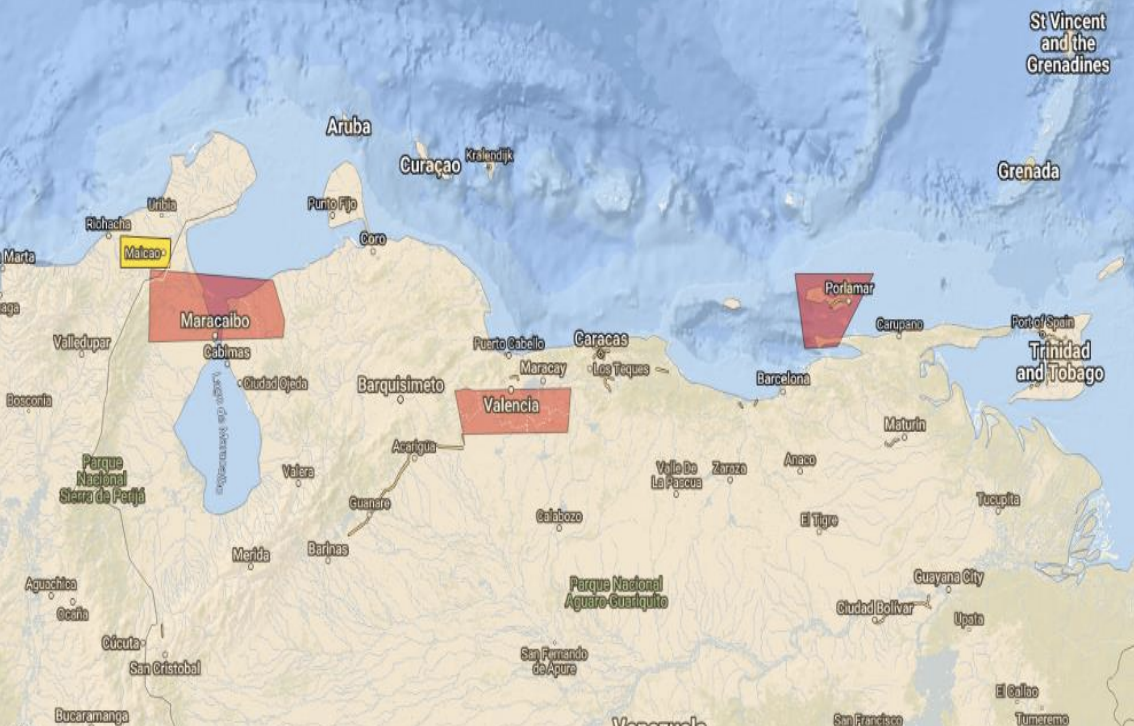
The younger brother of the Nasr Al-Din clan, Oday Nasr al-Din, is said to have been responsible for establishing paramilitary training centers on Margarita Island during 2011, recruiting among Bolivarian circles and sending them to receive training in Iran (Cardenas & Noriega 2011, p.3 ). The relevance of the Nasr Al-Din clan stems from Ghazi's role in the Venezuelan Foreign Affairs Ministry where he was stationed at the embassy in Damascus (Syria) arranging key meetings between senior Venezuelan officials such as the then Venezuelan Interior Minister and former Vice President of Venezuela, Tareck El Aissami, who resigned as Minister of Petroleum on Monday, March 20, 2023 via Twitter, his resignation being accepted by Venezuelan President Nicolas Maduro. El Aissami has been accused of corruption and financial mismanagement as current Minister of Petroleum. El Aissami was joined by former military counterintelligence officer Hugo "El Pollo" Carvajal - who was in Spanish custody and due to be extradited to the United States on drug trafficking charges in 2021 - and counterparts from Hezbollah. According to DEA informants, the meeting reinforced the cocaine-for-weapons scheme that materialized in 2014 (Humire 2020, p.8). Ghazi Nasr Al-Din remains a close collaborator of Nicolás Maduro.
The younger brother of the Nasr Al-Din clan, Oday Nasr al-Din, is said to have been responsible for establishing paramilitary training centers on Margarita Island during 2011, recruiting among Bolivarian circles and sending them to receive training in Iran (Cardenas & Noriega 2011, p.3 ). The relevance of the Nasr Al-Din clan stems from Ghazi's role in the Venezuelan Ministry of Foreign Affairs where he was stationed at the embassy in Damascus (Syria) arranging key meetings between senior Venezuelan officials such as the then Minister of Interior and former Vice President of Venezuela, Tareck El Aissami, who resigned as Minister of Petroleum on Monday, March 20, 2023 via Twitter, his resignation being accepted by Venezuelan President Nicolas Maduro. El Aissami has been accused of corruption and financial mismanagement as current Minister of Petroleum. El Aissami was joined by former military counterintelligence officer Hugo "El Pollo" Carvajal - who was in Spanish custody and due to be extradited to the United States on drug trafficking charges in 2021 - and counterparts from Hezbollah. According to DEA informants, the meeting reinforced the cocaine-for-weapons scheme that materialized in 2014 (Humire 2020, p.8). Ghazi Nasr Al-Din remains a close collaborator of Nicolás Maduro.
Finally, the most prominent figure in the Rada Clan is Venezuelan-Lebanese national Abdala Rada Ramel, who was arrested by Colombian police while operating in Barranquilla and in the Maicao area near the Venezuelan border.
Barranquilla and in the Maicao area, near the Venezuelan border. Rada was deported to Venezuela on suspicion of drug trafficking (Infobae 2018). The aspect that stands out about Abdala Rada Ramel is his direct links to senior Hezbollah commanders, such as ESO chief Salman Raouf Salman, who was the man on the ground for both Hezbollah and the Islamic Republic of Iran in the attack on the Israeli embassy in Buenos Aires in 1992 and the AMIA Jewish cultural center in 1994 (infobae 2019). This followed suspicion by Argentine authorities of a second member of the clan who also holds dual Lebanese-Venezuelan nationality - Amer Mohamed Akil Rada - implicated in these attacks, and whose family runs the cryptocurrency business linked to the Venezuelan government (Humire 2020).
Jefferson Guarín (2020) attributes the massification of Hezbollah's operations in Venezuela to the strategic alignment coined by Goforth (2012) "Axis of Unity" between Caracas and Tehran during the mandate of Hugo Chávez (1999-2013) and Mahmoud Ahmadinejad (2005-2013) and their common policy of opposing US influence in both the Middle East and the Americas under the discursive disguise of an "anti-imperialist" foreign policy and under formal cooperation agreements such as the one agreed by Nicolás Maduro and Ebrahim Raisi in June 2022. However, the deterioration of institutions in Venezuela contributed to the strengthening of Hezbollah's position in the country through illicit activities in frequent collaboration with other organizations such as drug cartels in the region and militant organizations such as the Colombian FARC after Hugo Chávez allowed the group to operate freely in Venezuela since March 2008 (Jefferson Guarín 2020, p.25).
The aforementioned convergence became public after the end of "Operation Titan" in 2014 mentioned above, which described air and land bridges between Hezbollah, Iran and Venezuela (Humire 2020, p.9). Moreover, the role of Venezuelan officials with cultural ties to Hezbollah and the Middle East are primarily responsible for paving the way for foreign operatives loyal to both Hezbollah and the Islamic Republic of Iran, such as Tareck El Aissami - who has held multiple positions in the Venezuelan regime - and who participated in the delivery of Venezuelan passports to 800 Syrian, Lebanese and Iraqi citizens, many of whom were members of Hezbollah (Op. cit. p.126). During 2017, the U.S Immigration and Customs Enforcement - ICE - along with OFAC designated Tareck El Aissami as a Specially Designated Narcotics Trafficker or SDT.
Recent Developments in the Caracas-Tehran-Beirut Convergence
According to Israel-based think tank I-AML Israel (2022), which focuses on monitoring financial compliance, financial crime, terrorism financing and corruption, exposes the recent activity of Mahan Air - Iran's own civilian airline - in Latin America where one of its Boeing 747s - specifically with registration number Y-35131 - was held at Ezeiza airport in Buenos Aires during last June. The aircraft was allegedly transferred to Venezuela's EMTRASUR to be operated by Venezuelan airline CONVIASA in October 2021 (I-AMIL Israel 2022). The purpose of the more than seven routes flown from Caracas to Tehran between February and May 2022, was to transport Venezuelan gold to Turkey and other Middle Eastern states. The U.S. Department of the Treasury's Office of Foreign Assets Control, OFAC (2020) has long maintained sanctions against Mahan Air, while it has been designated by anti-terrorism agencies as a key facilitator of the IRGC.
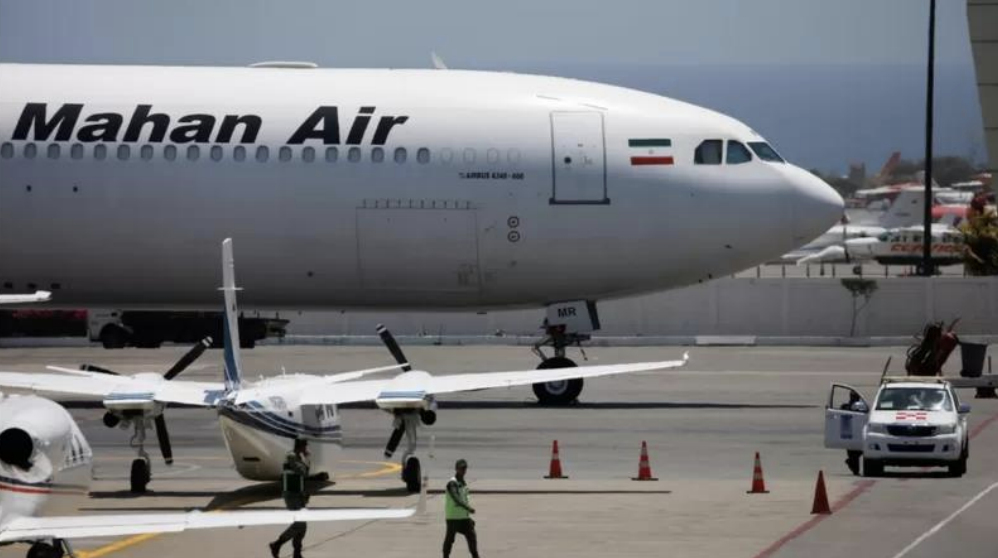
The couriers involved in this airlift between Venezuela and Iran are Muhammad Jaafar Kassir, who is a Hezbollah operative designated as a terrorist by OFAC, and Ali Kassir (aka Ali Ghassir aka Ali Nasr Al-Din Kassir aka Ali Qasir), linked, of course, to the notorious Lebanese Nasr Al-Din clan, based on the eastern Venezuelan island of Margarita (Nueva Esparta State).
These activities demonstrate how versatile these networks can be in collaborating in the interhemispheric financing of terrorism between the Americas and the Middle East, hiding under civilian activities such as commercial aircraft, diversifying their source of income and funding from narcotics to gold. The ingenuity of these Hezbollah networks in the Americas, as well as their Iranian handlers through the IRGC, demonstrates Jefferson Guarín's (2020) thesis of Hezbollah's metamorphosis from a mere terrorist organization to a major criminal organization, which has managed to entrench itself in key Venezuelan government power circles, while serving as a proxy for Iranian strategic objectives beyond the Middle East.
Conclusions
Hybrid threats are thus a real-world challenge to international security, in the sense that it undermines the means and the methods of monitoring the activities that are seemingly irrelevant to those tasked in assessing them. Also, the underestimation of policy makers and strategist of the capabilities of adversaries such as Iran in knitting a foothold in regions which are seldomly addresses as important from an international security stance such as the Americas, plays in favor of the growing networks of organized crime and terrorist cells which act as proxies for countries with strong animosity towards the West.
Likewise, the over-reliance on the strategic sense of a "Mackinderist" optic downplays the security risk and importance of regions such as Latin America, with Venezuela becoming a foothold for Hezbollah and the Iranian Revolutionary Guard Corps. Thus, the deterioration of democracies in the Western world -which includes Latin America- must be addressed properly and beyond mere academic exercises from the comfort of universities in the global North. The deterioration of democracies poses an imminent threat to the security of the international system in general. In addition to the above, a deep understanding of the logic of transnational organized crime should be enhanced in foreign policy circles for the purpose of putting forward effective policies to counter the actions of criminal organizations that serve the purpose of enacting the strategic objectives of rogue states. Thus, the 2.5 million acres of land granted to Tehran in Venezuela according to the above logic should be viewed with caution.
References
Álvarez Cabello, P. 2018. El tercermundismo como doctrina política internacional en el acercamiento de Irán a Venezuela. Oasis. 27 (may 2018), 169–190. DOI: https://doi.org/10.18601/16577558.n27.10.
BBC News Mundo. (2019, 8 april). Mahan Air, la controvertida línea aérea de Irán que inició vuelos directos a Venezuela. https://www.bbc.com/mundo/noticias-america-latina47860904
Dershowitz, T. (2022, 11 july). Don’t Bury Alberto Nisman Again. AlbertoNisman.org. Retrieved 5 january 2023, from: https://albertonisman.org/dont-bury-alberto-nismanagain/
El Aissami Maddah, Tareck Zaidan. (n.d). ICE. https://www.ice.gov/es/los-masbuscados-por-ice/el-aissami-maddah-tareck-zaidan
Franklin, L. A. (2022, 21 september). Iran Acquires 2.5 Million Acres of Venezuela. Gatestone Institute. https://www.gatestoneinstitute.org/18892/iran-venezuela-landpurchase
Goforth, Sean. (2012). Axis of Unity : Venezuela, Iran & the Threat to America: Vol. 1st ed. Potomac Books.
Hoffman, F. (2016). The Contemporary Spectrum of Conflict: Protracted, Gray Zone, Ambiguous, and Hybrid Modes of War. The Heritage Foundation. Retrieved on september 2022: https://www.heritage.org/military-strength-topicalessays/2016-essays/the-contemporary-spectrum-conflict-protracted-gray \
Humire, Joseph M. Hezbollah’s Support Network in Venezuela and Ties to the Maduro Regime. Atlantic Council (2020). https://www.jstor.org/stable/resrep29477.5
Infobae (2018). Tráfico de drogas, lavado de dinero, terrorismo y un colombiano en la mira: cómo funciona Hezbollah en América Latina https://www.infobae.com/america/america-latina/2018/05/21/trafico-de-drogas-lavado-de-dinero-terrorismo-y-un-colombiano-en-la-mira-como-funciona-hezbollah-en-america-latina/
Infobae (2019. ARTICLE ORIGINALLY PUBLISHED IN AUGUST 2018). Salman Raouf Salman, el terrorista de Hezbollah que coordina el narcotráfico y el lavado de dinero en América Latina. https://www.infobae.com/america/america-latina/2018/08/01/salman-raouf-salman-el-terrorista-de-hezbollah-que-coordina-el-narcotrafico-y-el-lavado-de-dinero-en-america-latina/
Jefferson Guarín P., “FARC-Hezbollah: The success of Venezuela-Iran proxy groups and their convergence in the Americas”, Security and Defence Quarterly 31 n.o 4 (2020): 117-134. DOI: 10.35467/sdq/130934.
Lloyd Insurance Sheds Light on Iran Led Hezbollah Operations Smuggling Gold from Venezuela | i-AML Israel. (2022, 29 november). i-AML Israel Anti-Money Laundering. https://i-aml.com/news/29112022/
Lob, Eric. Iran-Venezuela relations: Presidents, postures, and pressures. (2022, 22 august). Middle East Institute. Retrieved 3 january 2023: https://www.mei.edu/publications/iran-venezuela-relations-presidents-postures-and-pressures
Maduro cedió un millón de hectáreas de tierras venezolanas a Irán. (2022, 28 julio). Ntn24. Retrieved 12 december 2022: https://www.ntn24.com/americalatina/venezuela/maduro-cedio-un-millon-de-hectareas-a-iran-399018
Noriega, R. F. & Cardenas, J. (2011). The Mounting Hezbollah Threat in Latin America. En American Enterprise Institute for Public Policy. American Enterprise Institute for Public Policy. Retrieved 5 january 2023: https://www.aei.org/wpcontent/uploads/2014/09/No-3-LatinAmerican-2011g.pdf
Pereira Stallaert, C. (2018). The strategic alliance between Chávez and Ahmadinejad, and its impact on international institutions, from a peripheral-realist perspective. Portuguese Journal of Social Science, 17(2), 179–197. DOI: https://doi.org/10.1386/pjss.17.2.179_1
Sorio, A.B. (2016). Venezuela and the Middle East Under Hugo Chávez (1999–2013): Strategic Continuities and Ideological Preferences. In: Tawil Kuri, M. (eds) Latin American Foreign Policies towards the Middle East. Middle East Today. Palgrave Macmillan, New York. DOI: https://doi.org/10.1057/978-1-137-59939-1_6
The DEA’s Targeting of Hezbollah’s Global Criminal Support Network. (s. f.). The Washington Institute. https://www.washingtoninstitute.org/policy-analysis/deastargeting-hezbollahs-global-criminal-support-network
The DEA’s Targeting of Hezbollah’s Global Criminal Support Network. (s. f.-b). The Washington Institute. https://www.washingtoninstitute.org/policy-analysis/deastargeting-hezbollahs-global-criminal-support-network
Treasury Designates Key Actors in Mahan Air Illicit Procurement Operations. (2023, 10 january). U.S. Department of the Treasury. https://home.treasury.gov/news/pressreleases/sm1098
